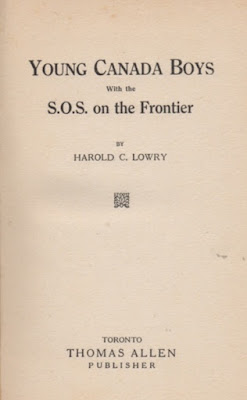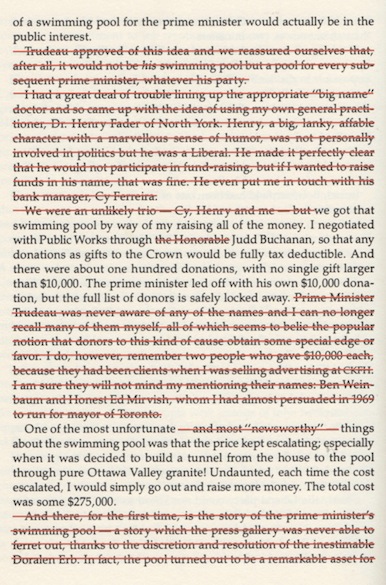The Adventures of Jimmie Dale
Frank L. Packard
Toronto: Copp Clark, 1917
This is my fourth Packard. Put in context, that's like tackling John Buchan's Witch Wood, Castle Gay and Sick Heart River before getting to The Thirty-Nine Steps. The Adventures of Jimmie Dale is the real entry point to Packard; it's his best-known book, his best-selling work and it introduces his most popular character. As with Buchan and Richard Hannay, Packard returned to his hero repeatedly throughout his career.
Jimmie Dale owes everything to his late father, who made millions manufacturing the finest safes money could buy. You might say that the fortune came through protecting those of others. Jimmie himself dabbled in sketching and writing before turning to breaking and entering. Donning a black silk mask, he'd sneak into the expansive homes of New York's well-to-do, crack open their safes, and affix a diamond-shaped grey seal in place of a carte de visite. Nothing would be taken – Jimmie has never wanted for anything – the thrill was payment enough.
One night, all went horribly wrong. Jimmie's secret identity as the "Gray Seal" was discovered by a mysterious, unseen woman who threatened to expose him unless he turned his talents toward combatting crime. The millionaire playboy did just that – resulting in even greater thrills.
There are comparisons to be made. Jimmie Dale follows Baroness Orczy's Scarlet Pimpernel by some ten years, though I would argue that he's had a far greater influence. For one, the Gray Seal's adventures take place in a contemporary setting, not some fanciful, idealized past. There's a gritty reality in the depictions of New York's impoverished and its criminal class, aided I think by the access Packard was granted to NYPD stakeouts and raids. Then there is the Sanctuary, a secret lair in which Jimmie transforms into Larry the Bat, to all appearances a down-and-out cocaine addict who moves through the city's underworld. As both Larry and the Gray Seal, Jimmie wears a wide leather belt holding the tools of his crime fighting trade.
Walter Gibson acknowledged his debt to Packard in creating the Shadow. That Batman co-creator Bob Kane never said a thing is unsurprising.
Walt Disney was a great Gray Seal fan, and would re-enact scenes from the adventures before his staff. Here's a photo of Uncle Walt with a copy of Jimmie Dale and the Blue Envelope Murder (1930) on his desk. In 1952, Disney purchased the television rights to the adventures and tried to interest NBC in a series. Too dark, it seems. Wade Sampson's excellent article "Walt Disney aka the Gray Seal" has more on the failed pitch.
I'm making a lot of the Disney connection because The Adventures of Jimmie Dale is even better suited for television today. The novel's structure owes much to the fact that it initially appeared in serialization. The first part, "The Man in the Case", details ten intricate and brilliantly executed adventures, each instigated by the mysterious woman. It's episodic, yet there is character development and an overarching narrative. The second part, "The Woman in the Case", consists of one long adventure in which the mystery of the mysterious woman is finally solved.
The mystery the reader is left with is how such an influential character can be so forgotten. Why has there been no revival? How is it that The Adventures of Jimmie Dale is out of print? Most of all, why did it take me so long to get around to reading it?
Gray? Grey?: I've used both here: one for the character and one for his calling card. A fellow Montrealer, I expect Packard was brought up to use "grey", but he was a pro who would've known to use "gray" when writing for the American market. Interestingly, the author anglicized the Gray Seal's adventures for British publication. Four years ago, a generous reader sent me these comparisons of the American and British versions:
Jimmie? Jimmy?: From the earliest days, publishers have struggled with the hero's name.
I've encountered two different editions published as The Adventures of Jimmy Dale, though the texts of each had Jimmie as "Jimmie".
Didn't buy either.
Big mistake.
I've encountered two different editions published as The Adventures of Jimmy Dale, though the texts of each had Jimmie as "Jimmie".
Didn't buy either.
Big mistake.
Bloomers: Mark Abley published a very good piece on these unintentional double entendres a few months back in the Gazette, noting amongst other things that the meaning of "ejaculation" has changed over time. The word and its variations appear eleven times in The Adventures of Jimmie Dale.
This is a very fine bloomer:
"Ah!" – it came in a fierce little ejaculation from Jimmie Dale.But it is outdone by what is the best bloomer I've read all year:
A chorus of ejaculations rose from the reporters, while their pencils worked furiously.Curiously, the word features just once in the second Grey Seal novel, The Further Adventures of Jimmie Dale (1919):
"Oh, colonel!" There was mingled delight and hesitation in her ejaculation.
 |
| Motion Picture News, 30 June 1917 |
Object: A 468-page hardcover, my jacket-less first Canadian edition was purchased for $20.00 this past summer. It's horribly beat-up, but the money went to charity.
Access: Copies can be found at Library and Archives Canada, Bibliothèque et Archives nationales du Québec, the Toronto Public Library and pretty much every one of our universities.
Plenty of old copies are being offered online for as little as six American dollars. At US$150 the one to buy is a Very Good copy of the Copp Clark edition in Very Good jacket being offered by a bookseller in Milton, Ontario.
I know of two translations – Irish (Tuille de eachtraí Shéamuis Uí Dhuibhir) and Spanish (Aventuras de Jim Dale) – though I suspect there are more.












































